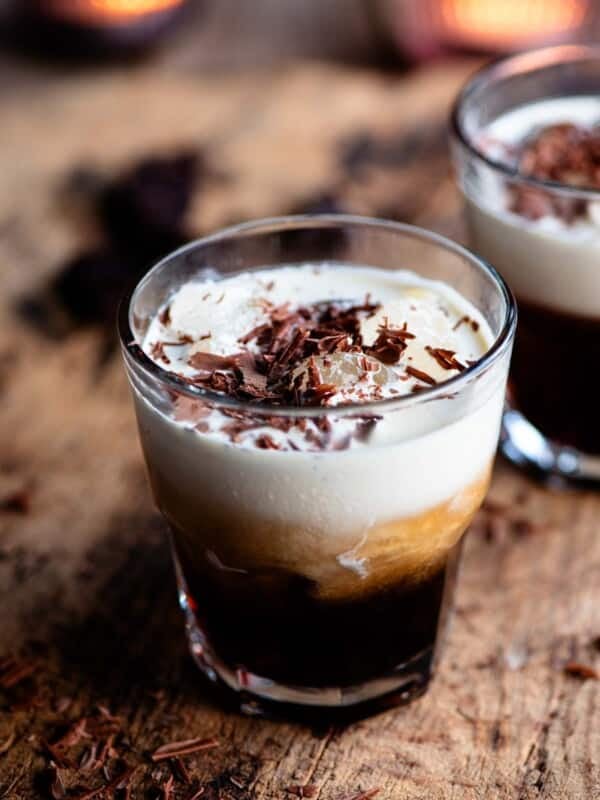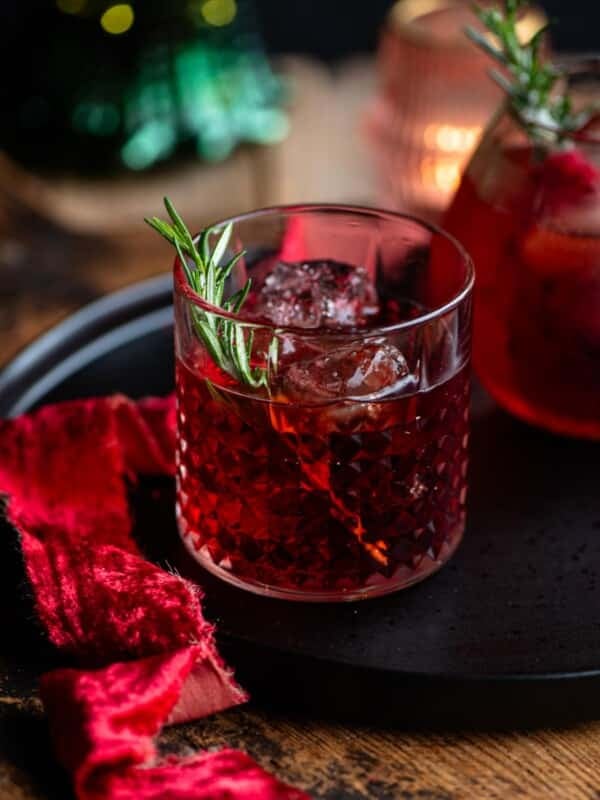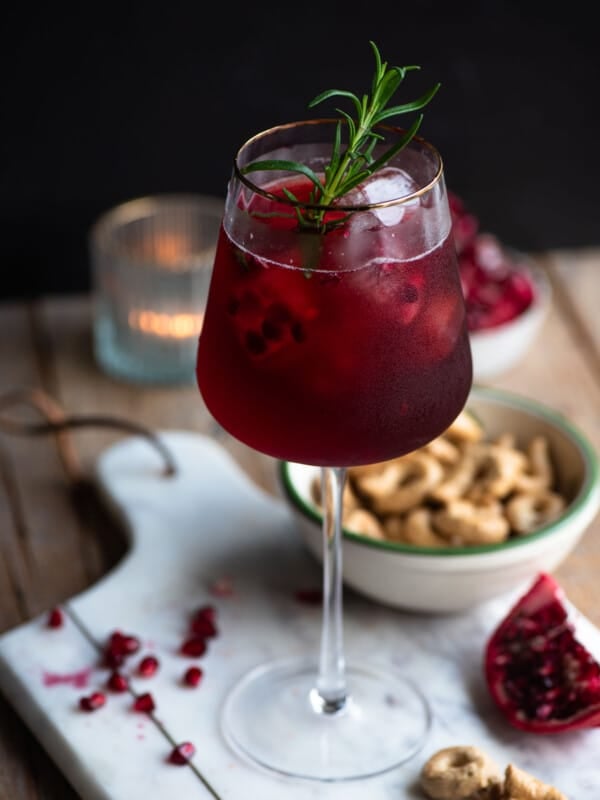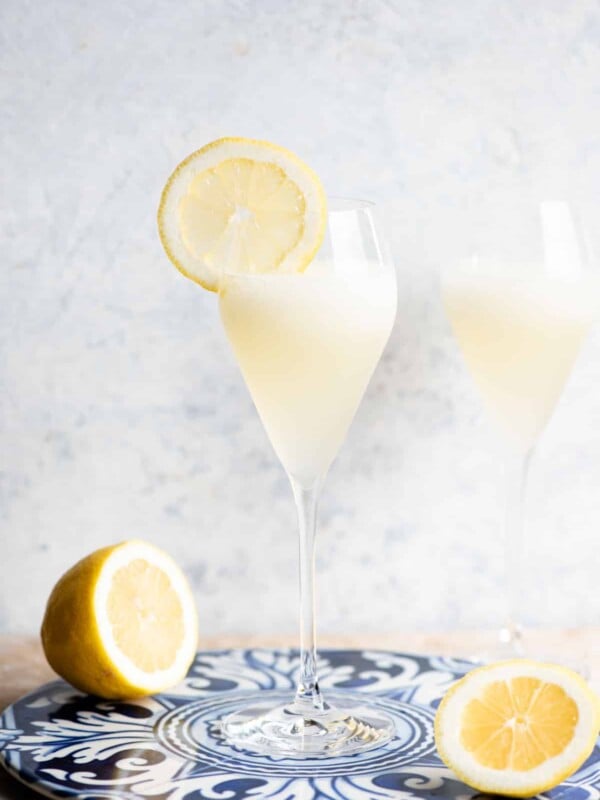This post may contain affiliate links. Please read our disclosure policy.
How to make homemade Limoncello that’s drinkable instantly! It’s bright, refreshing and bursting with fresh lemons, the perfect after-dinner drink on summer nights!
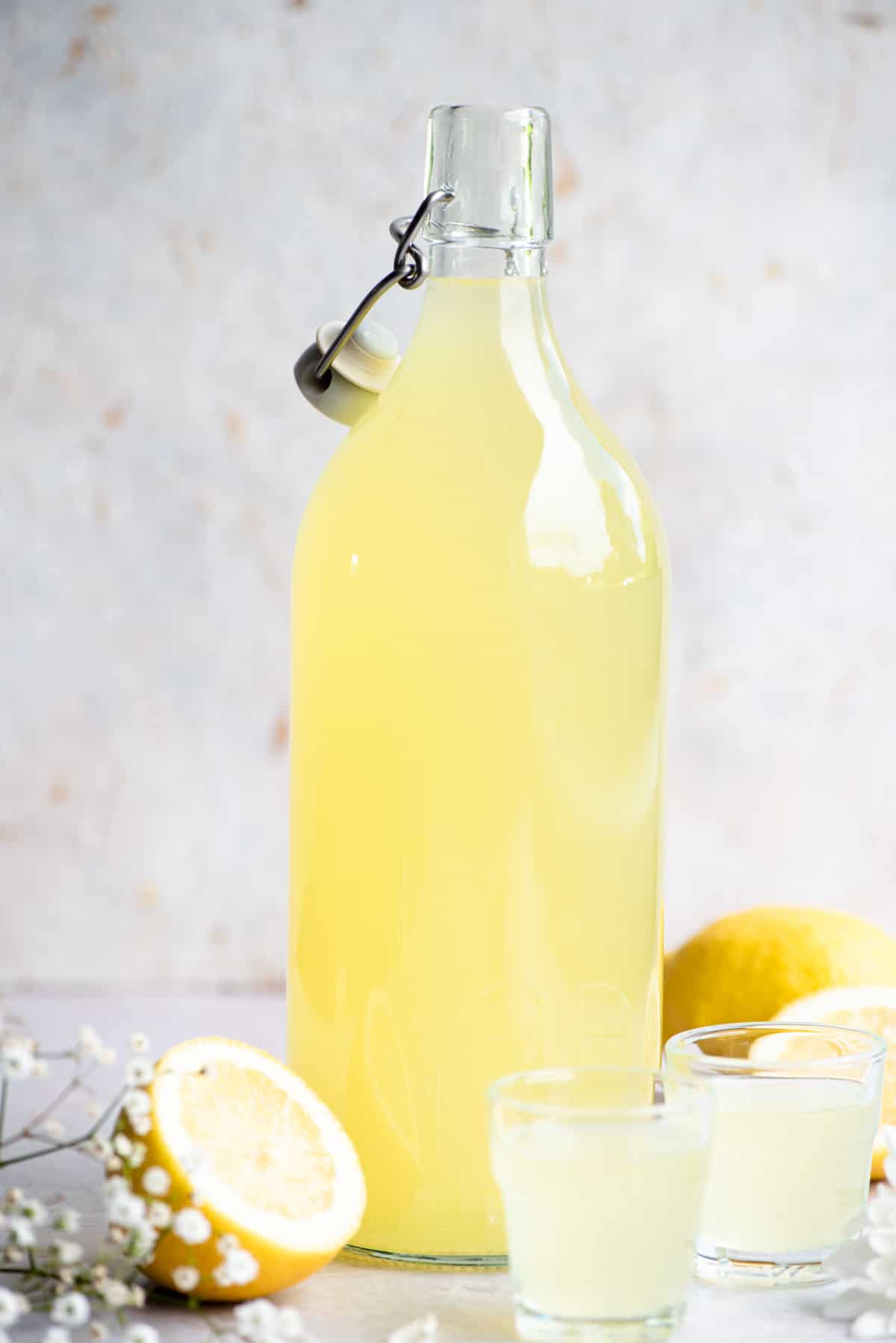
Limoncello is the taste of Italian summers and it’s so easy to make at home!
It’s sweet, tart and bursting with fresh lemon flavour. Sip on a small glass after dinner, add it to cocktails on a hot summer’s day or use it to make desserts and gelato.
To make it drinkable instantly we’ve added fresh lemon juice and use vodka instead of 190 proof, pure grain alcohol which can be really hard to find outside of Italy.
It’s super fresh, zingy and absolutely delicious, all you need is 3 simple ingredients and a clean bottle for storing it.
Check out the full recipe below including step by step photos, tips and video tutorial, enjoy!
Ingredients – what you need
The photo below shows you everything you need to make homemade Limoncello plus some important notes! Full quantities are in the printable recipe card below.

Pin this now to find it later
Pin It- Lemons – use the best quality large lemons you can find they should be very firm and bright, with no dark yellow skin.
- Vodka – use a good quality vodka, it makes a huge difference to the overall flavour. We used Absolute vodka to make ours.
- Sugar – white granulated or caster sugar is all you need, don’t use brown sugar.
Put the sugar and water in a saucepan and bring to a boil until the sugar has completely dissolved. Turn off the heat and set aside (photos 1 & 2).
Peel the lemon skin with a vegetable peeler making sure you don’t remove the white pith which will make the limoncello bitter then juice the 8 lemons through a sieve (photos 3 & 4).

Pour the sugar syrup, lemon juice and vodka into a large 1.5 litre jar. Add the lemon peel and stir to combine (photos 5-7).
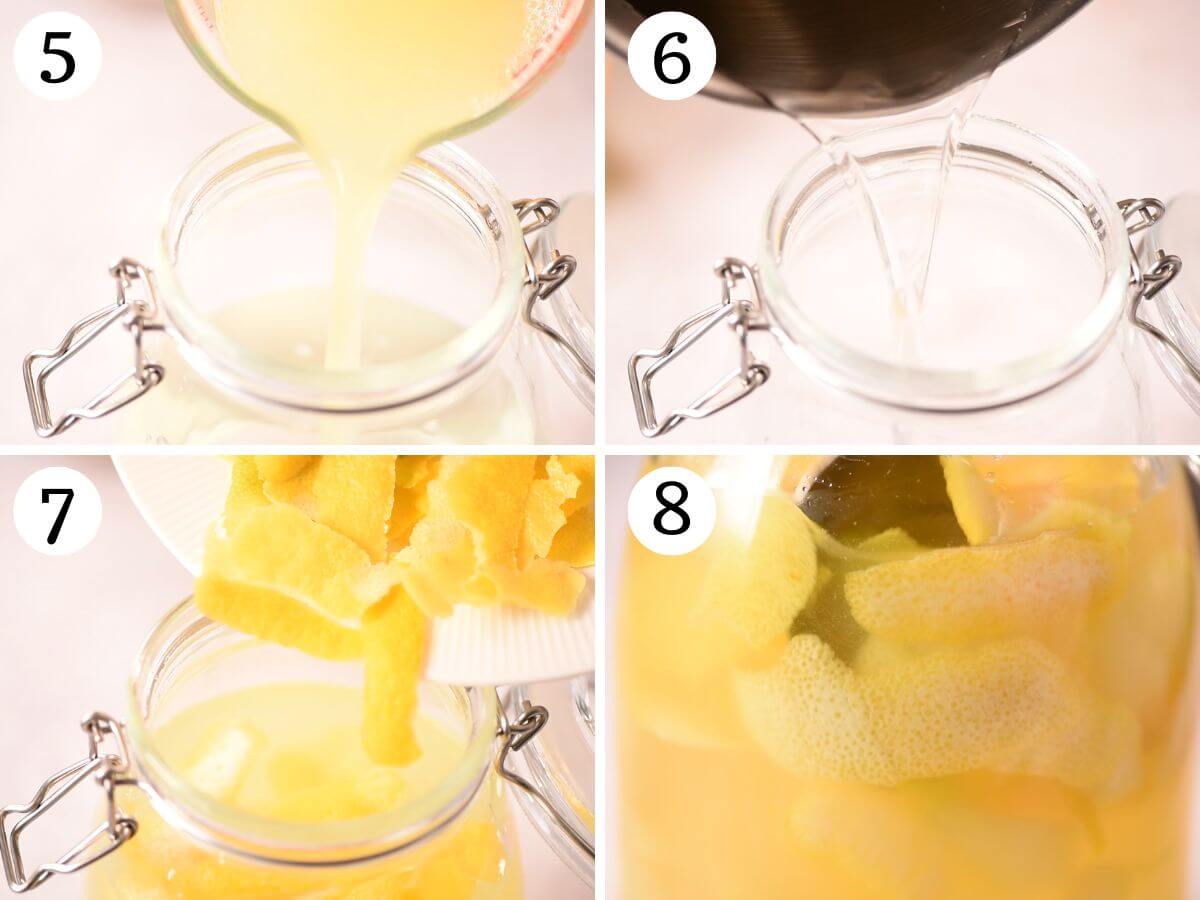
Although the limoncello is drinkable immediately it’s best to leave it from 1 week to 1 month (it develops more flavour the longer it’s left). Leave it in a cool, dark place to develop (no need to refrigerate).
When ready, strain out the peel and transfer the limoncello to a bottle. You can store the limoncello at room temperature, a fridge or freezer.
Recipe tips and FAQs
- Bottling – add the lemon peel and limoncello into a bottle you can get the peel out of again or that you can recycle.
- Serving suggestions – Serve chilled limoncello in small shot glasses to sip on after a meal, it’s the perfect summer digestive.
- Other ways to use limoncello – you can add limoncello to desserts such as cake frosting, homemade limoncello gelato or even turn it into an Amalfi style spritz with prosecco – perfect for summer!
- Limoncello cocktails – check out our delicious summer cocktails using limoncello; Limoncello Martini (Lemon Drop Martini), Limoncello Mojito Cocktail, Sparkling Limoncello Cocktail.
Lemons from the Amalfi coast will make the limoncello extra delicious but any fresh, ripe and unwaxed lemons will do.
Traditionally, Limoncello is made with 95% pure grain alcohol but it’s not available to buy in every country or easy to find. Good quality vodka works just as well.
If you find the Limoncello too strong to your taste you can easily add more sugar syrup to taste.
The limoncello will keep well in the fridge for up to 3 months.
Because this version is made with vodka and lemon juice the limoncello will freeze solid (although it defrosts quickly).
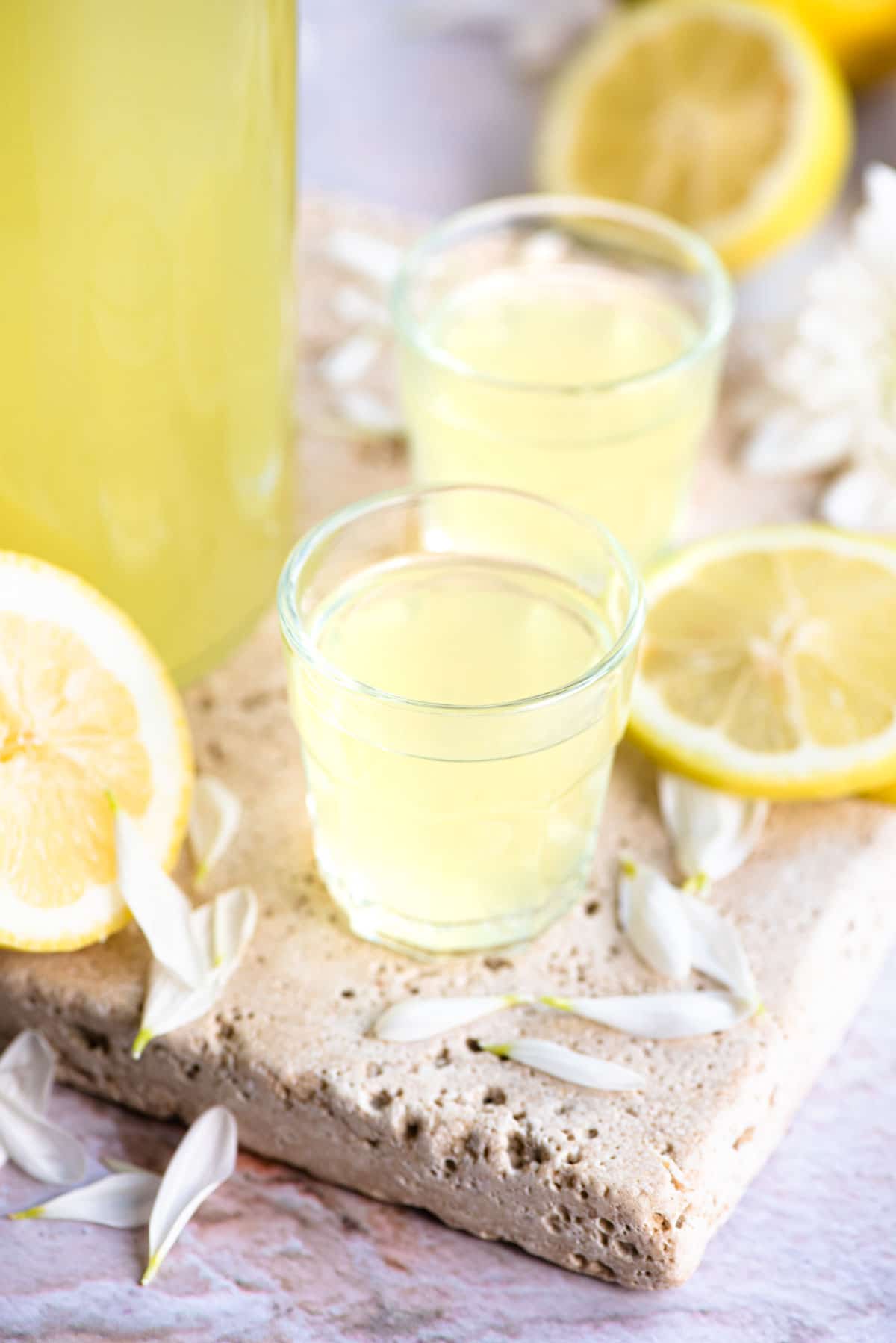
If you’ve tried this Homemade Limoncello or any other recipe on the blog then don’t forget to rate the recipe and let me know how you got on in the comments below, I love hearing from you! You can also FOLLOW US on FACEBOOK, INSTAGRAM and PINTEREST or sign up to our NEWSLETTER to see more of our delicious food
Step By Step Photos Above
Most of our recipes come with step by step photos, helpful tips and tricks to make it perfectly first time and even video!
Homemade Limoncello – Quick and Easy Recipe

Ingredients
- 8 large unwaxed lemons
- 1 cup granulated sugar, (225g)
- 1 cup water, (240ml)
- 3 cups good quality vodka, (700ml/23.6 fl oz)
Instructions
- Put the sugar and water in a sauce pan and bring to a boil until the sugar has completely dissolved. Turn off the heat and set aside.
- Peel the lemon skin with a vegetable peeler making sure you don’t remove the white pith which will make the limoncello bitter then juice the 8 lemons through a sieve.
- Pour the sugar syrup, lemon juice and vodka into a large 1.5 litre jar and add the lemon peel, stir to combine.
- Although the limoncello is drinkable immediately it's best to leave it from 1 week up to 1 month (the longer the peels steep the better it will taste). Leave it in a cool, dark place to develop (no need to refrigerate).
- When ready, strain out the peel and transfer the limoncello to a bottle. You can store the limoncello at room temperature or fridge.
Video
Notes
- Bottling – add the lemon peel and limoncello into a bottle you can get the peel out of again or that you can recycle.
- Serving suggestions – Serve chilled limoncello in small shot glasses to sip on after a meal, it’s the perfect summer digestive.
- Other ways to use limoncello – you can add limoncello to desserts such as cake frosting, homemade limoncello gelato or even turn it into an Amalfi style spritz with prosecco – perfect for summer!
- Limoncello cocktails – check out our delicious summer cocktails using limoncello; Limoncello Martini (Lemon Drop Martini), Limoncello Mojito Cocktail, Sparkling Limoncello Cocktail.
Helpful Info for All Recipes
- I always use extra virgin olive oil in all of my recipes unless stated otherwise
- When I use canned or jarred tomatoes of any kind I always use Cirio or Mutti brands for the best results and flavour.
- All vegetables are medium sized unless stated otherwise
- All recipes are tested and developed using a fan (convection) oven
- Find out more about how nutrition is calculated.
- Check out our must have Italian Pantry Staples.
- You can also find all our Essential Kitchen Tools for Italian Cooking.
Nutrition
Nutrition information is automatically calculated, so should only be used as an approximation.
